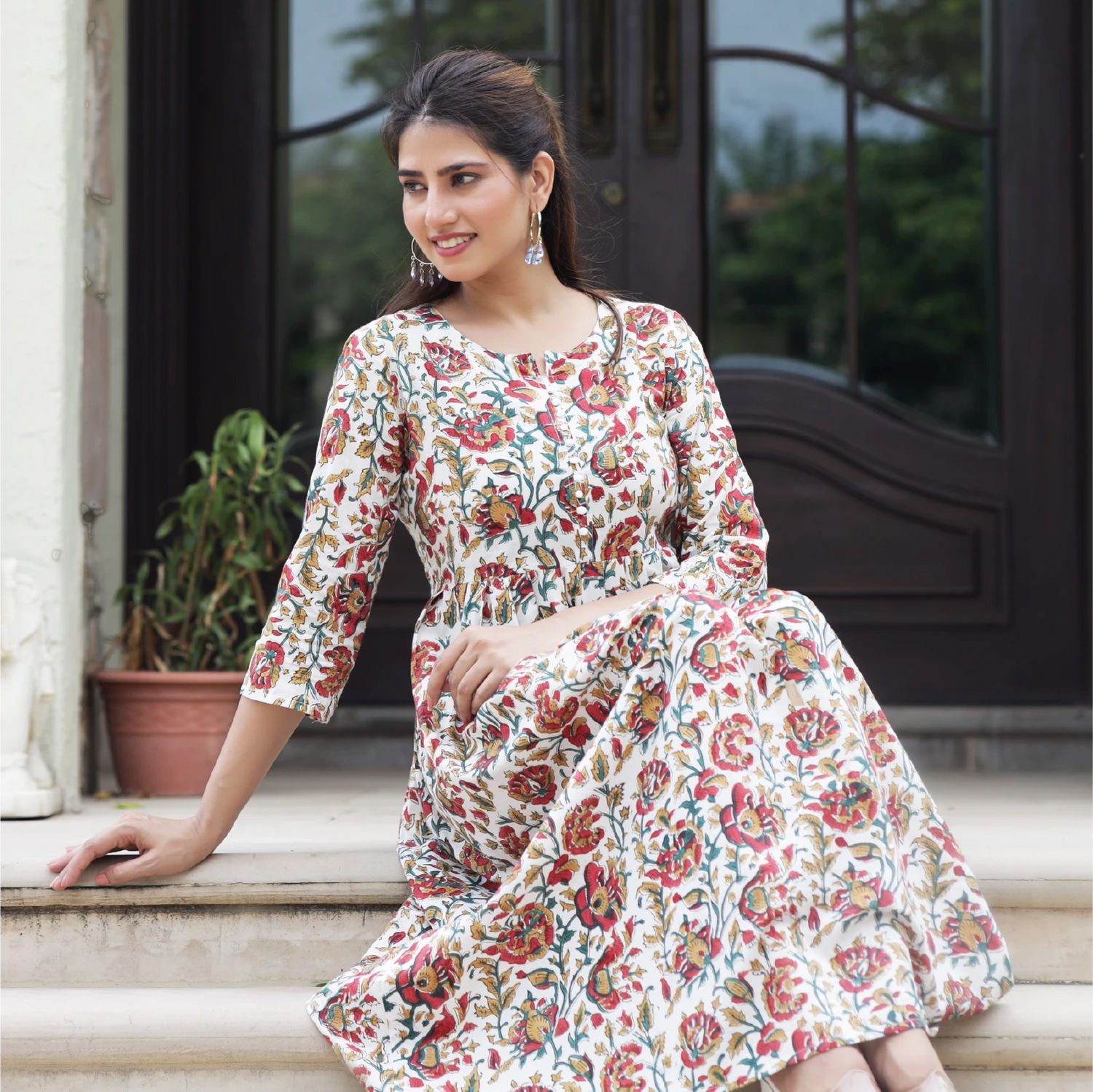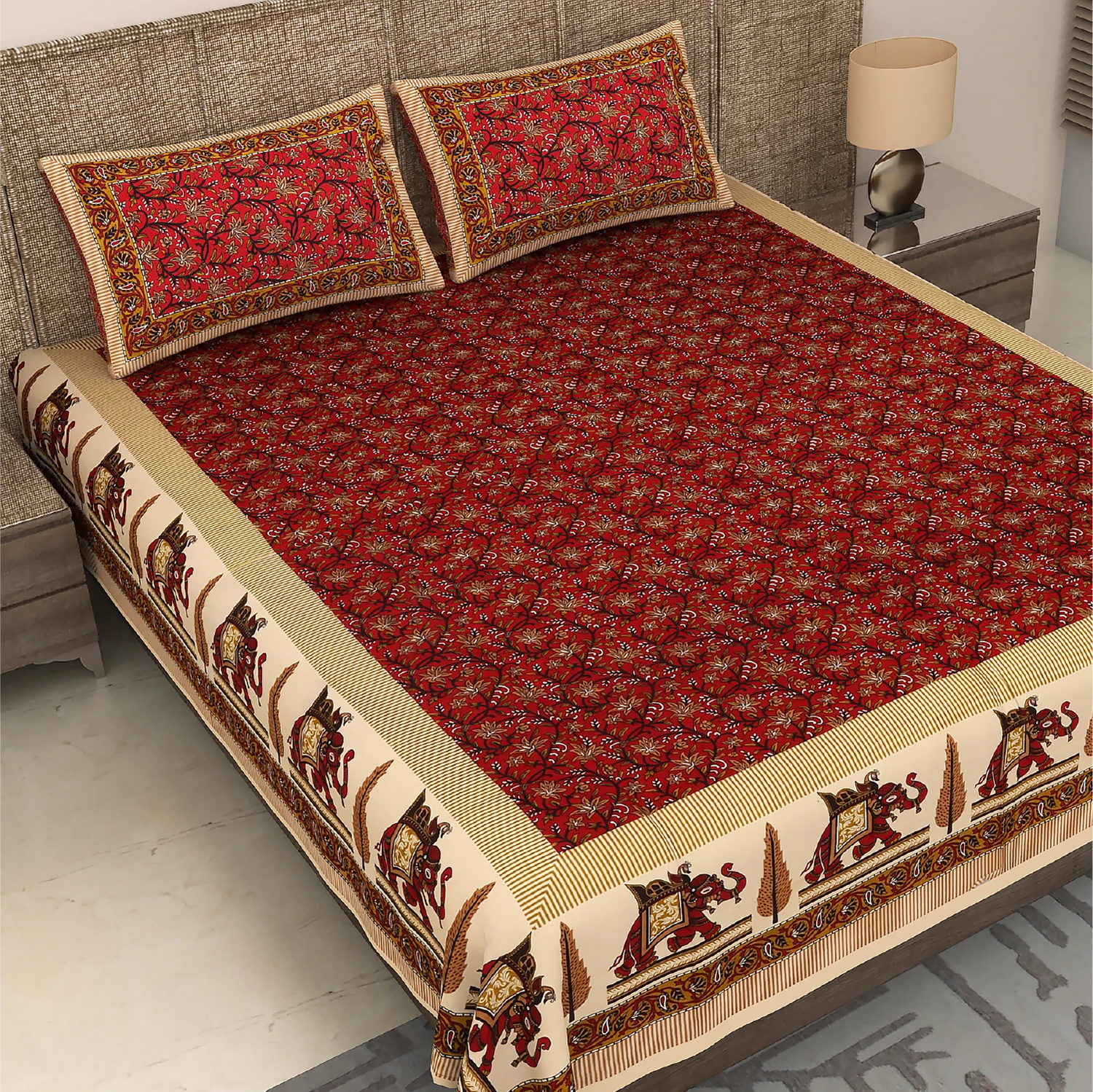
The Timeless Journey of Ethnic Handblock Printed Kurtis: From Village Artisans to Modern Wardrobes
Share
In the bustling landscape of contemporary fashion, there exists a quiet revolutionone that whispers tales of heritage through vibrant colors and intricate patterns. Ethnic handblock printed kurtis stand as living testaments to India's rich textile legacy, each piece carrying within its fibers the heartbeat of village artisans who have perfected their craft over generations. These aren't merely garments; they're cultural ambassadors that journey from humble workshops in dusty villages to become cherished centerpieces in modern wardrobes across India and beyond.
When you slip into a handblock printed kurti, you're not just wearing clothingyou're draped in stories, wrapped in tradition, and adorned with artistry that has withstood the test of time. As the soft cotton embraces your skin, there's an unspoken connection formed between you and the hands that lovingly created each pattern, one block at a time.
The Ancient Art of Handblock Printing: A Heritage in Color
Origins and Cultural Significance
The roots of handblock printing run deep into India's cultural soil, dating back over 2,000 years. Born in the desert state of Rajasthan, particularly in regions like Bagru and Sanganer near Jaipur, this art form evolved as a beautiful response to the human desire for self-expression through clothing.
What began as a craft practiced by specific communities like the Chippa community has transformed into a celebrated art form that captures India's vibrant spirit. Each region developed its distinctive motifsfloral butis from Sanganer, geometric patterns from Bagru, and the iconic leheriya designs that mimic flowing waterall telling stories of their geographical and cultural origins.
"Every block carries with it the wisdom of ancestors," says a master artisan from Jaipur, whose family has been carving printing blocks for seven generations. These wooden blocks, meticulously carved by hand, serve as the primary tools in creating patterns that have adorned royalty and common folk alike throughout history.
The cultural significance extends beyond aestheticstraditional motifs often carried symbolic meanings: the peacock representing beauty, the lotus signifying purity, and geometric patterns embodying harmony with nature. In many ways, these kurtis became wearable expressions of cultural identity and community belonging.
The Artisan's Journey: Crafting Beauty One Block at a Time
From Village Workshops to Fashion Statements
In small workshops across Rajasthan, Gujarat, and other textile hubs, the day begins early for block printing artisans. The process is labor-intensive yet meditativea dance between creator and creation that unfolds with practiced precision.
The journey of a handblock printed kurti begins with natural fabrics, primarily cotton, being washed and prepared to receive color. Artisans then mix natural dyes derived from minerals, plants, and sometimes even insects to create vibrant hues that are both beautiful and environmentally friendly. The Jaipuri handblock kurti sets showcase this brilliant color palette that has made the region famous worldwide.
The printing itself is where magic happenswooden blocks dipped in dye are pressed firmly onto fabric with practiced precision, creating patterns that align perfectly despite being applied entirely by hand. This requires not just skill but an intuitive understanding of pressure, alignment, and timing that can only come from years of practice.
"Each thump of the block against fabric carries our heartbeat," shares a female artisan who has been block printing for over three decades. "When women wear our kurtis, they carry a piece of our soul with them."
What's remarkable is how these village artisans have adapted their ancient craft to contemporary tastes without compromising its essence. The floral handblock printed kurtis that once adorned village celebrations now grace corporate offices and college campuses, speaking to the versatility of this timeless art form.
Modern Appeal of Ethnic Handblock Printed Kurtis: Tradition Meets Contemporary Style
Versatility and Sustainable Fashion
The enduring popularity of ethnic handblock printed kurtis stems from their remarkable versatility. These pieces effortlessly bridge the gap between traditional and contemporary, making them perfect for various occasions.
A simple cotton kurti with mulmul dupatta can transition from casual day wear when paired with jeans to a more formal look when styled with palazzo pants. The blue kalamkari kurti exemplifies how traditional techniques can create pieces that feel both timeless and current.
Modern women are increasingly drawn to these garments not just for their aesthetic appeal but also for their sustainability credentials. In an era of fast fashion and mass production, handblock printed kurtis stand as beacons of slow, conscious fashion. Each piece:
- Uses natural fabrics that breathe with the body
- Often employs natural dyes that are gentle on skin and environment
- Supports traditional artisans and their communities
- Creates minimal waste compared to industrial production
According to a report by the Craft Council of India, handcrafted textile products like block printed kurtis have seen a 30% increase in demand among urban consumers who are becoming more conscious about the environmental and social impact of their clothing choices.
Fashion influencer and sustainability advocate Aditi Mayer notes, "Handblock printed garments represent the antithesis of fast fashionthey're thoughtfully created, built to last, and carry cultural significance that transcends trends."
The appeal extends beyond individual consumers to wholesale buyers and boutique owners who recognize the growing market for authentic, handcrafted pieces. Many ethnic cotton pant kurti sets now feature in curated collections that celebrate Indian craftsmanship while catering to contemporary sensibilities.
Styling the Timeless: Making Handblock Prints Work for Modern Life
The beauty of ethnic handblock printed kurtis lies in their adaptability. Whether you're a college student, a working professional, or a homemaker, these versatile pieces can be styled to suit your lifestyle and personal aesthetic.
For casual outings, pair a floral booti printed kurti with denim jeans and silver jhumkas for an effortless Indo-western look. For office wear, opt for subtle prints in sophisticated colors like indigo or maroon, paired with solid-colored trousers or palazzos.
Special occasions call for more elaborate stylesperhaps a handblock printed kurti with dupatta paired with a matching bottom and statement jewelry that complements the colors in the print.
What makes these pieces truly special is how they can be personalized. As fashion designer Rina Dhaka observes in her interview with Vogue India, "Handblock printed garments allow wearers to express their individuality while honoring collective heritageit's this duality that makes them so appealing to the modern Indian woman."
Preserving Heritage: The Future of Handblock Printing
As we embrace these beautiful garments, we also participate in preserving a heritage craft that faces challenges from mechanization and changing consumer preferences. Organizations like the Jaipur Bloc work tirelessly to ensure that traditional block printing techniques aren't lost to history.
By choosing laheriya print kurtis and other handblock printed garments, consumers become active participants in cultural preservation. Each purchase supports not just individual artisans but entire communities whose identities are interwoven with these crafts.
The Continuing Journey: From Past to Future
As ethnic handblock printed kurtis continue their journey from humble village workshops to contemporary wardrobes, they remind us that true style is timeless. These pieces aren't just garmentsthey're stories woven with love, tradition, and artistry that connect us to our roots while embracing our modern lives.
When you choose a handblock printed kurti, you're not merely following a fashion trend; you're becoming part of a continuing narrative that spans centuries. You're honoring the hands that create, preserving techniques that define our cultural identity, and making a conscious choice to value craftsmanship over mass production.
In a world that often moves too quickly, these beautiful garments invite us to pause, appreciate the human touch, and carry forward traditions that deserve to be celebrated for generations to come. After all, in the timeless appeal of ethnic handblock printed kurtis, we find not just clothing, but connectionto our heritage, to artisan communities, and to the enduring beauty of Indian craftsmanship.






















































